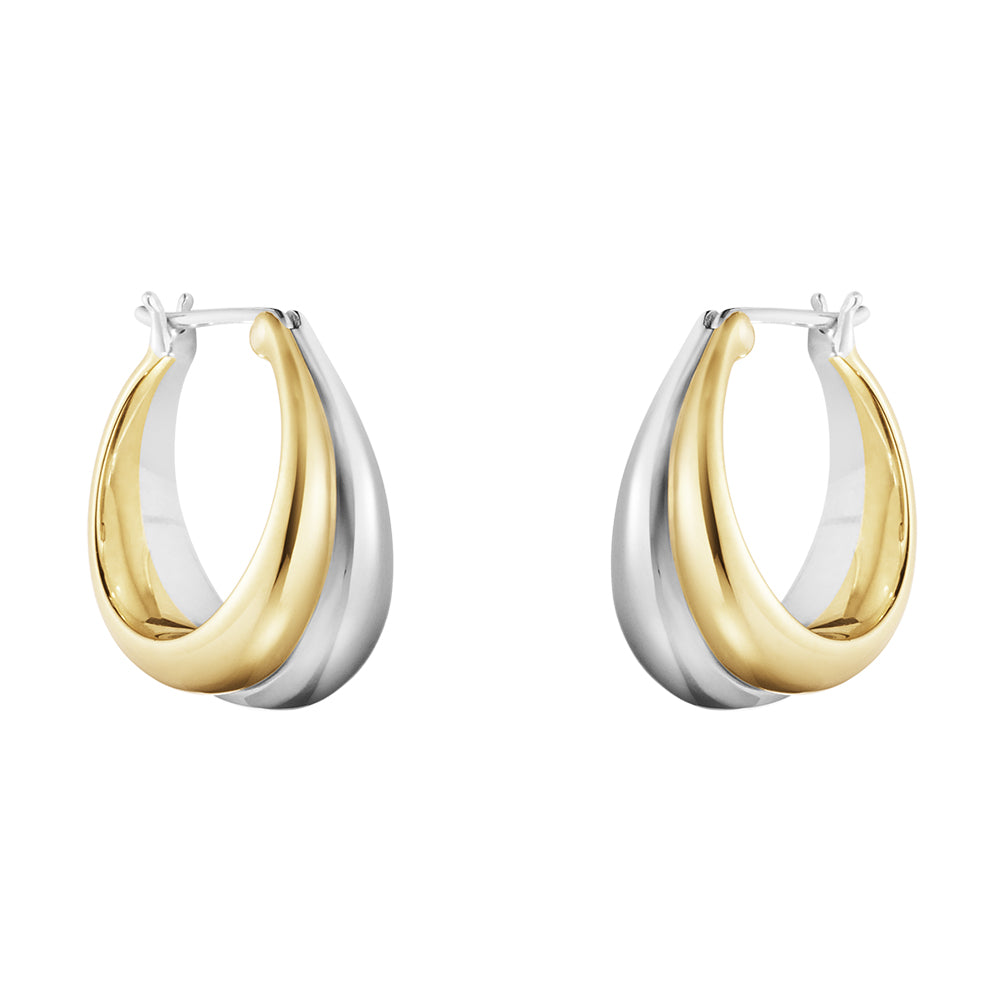
How to Clean Silver Necklace: A Practical Guide
Introduction
There’s something eternally elegant about a silver necklace. Whether it’s a minimalistic chain that whispers sophistication or a bold statement piece that catches the light just right, silver jewelry has a timeless appeal. But if you’ve owned silver pieces for any length of time, you’ve probably noticed something disappointing—tarnish. Yes, even the most exquisite silver necklaces are not immune to the dulling effects of time, exposure, and improper storage. Tarnish doesn’t mean your jewelry is ruined, but it does mean it’s time for some tender loving care. In this blog post, we’ll guide you through everything you need to know about how to clean your silver necklace, keep it dazzling, and even choose pieces that maintain their brilliance with minimal effort. Plus, we’ll highlight some handpicked silver necklaces from our Relaxfeel Fashion collection that are not just stunning but also designed with durability and elegance in mind. According to renowned jewelry designer Kate Bracken, "Silver is a versatile metal that can elevate any outfit, but proper care is essential to preserve its luster and beauty." Let’s dive into the world of silver care and discover how to make your silver necklaces look as good as new, time and time again.
Why Silver Tarnishes
Before we jump into the cleaning methods, let’s understand the root cause. Silver tarnishes because of a chemical reaction between the metal and sulfur - containing substances in the air. This creates a layer of silver sulfide, which appears as a dark or cloudy coating on your necklace. "Silver tarnish is a natural process, but it can be minimized with the right knowledge and care," says jewelry conservation expert Dr. James Wilson. It’s a natural process that occurs over time, but certain factors can accelerate it. Common Causes of Tarnish:
-
Humidity and moisture: High humidity levels in the environment can speed up tarnishing. When silver comes into contact with moisture, it creates an ideal condition for the chemical reaction to take place.
-
Skin oils and sweat: The natural oils and perspiration from our skin can leave residues on the silver, contributing to tarnish buildup over time.
-
Exposure to chemicals: Everyday products like perfumes, lotions, and even some hair products contain chemicals that react negatively with silver. Fashion stylist Emily Chen advises, "Always apply your fragrances and lotions before putting on your silver jewelry to prevent chemical reactions."
-
Improper storage: Leaving your silver necklace out in the open air, exposed to dust and pollutants, or stored in a way that allows it to rub against other jewelry pieces can lead to faster tarnishing.

Daily Habits to Keep Your Silver Necklace Clean
You can delay tarnish and preserve the shine of your silver jewelry by incorporating a few smart habits into your daily routine. These small but consistent actions can make a significant difference in the longevity of your silver pieces.
-
Last On, First Off: Make it a habit to put on your silver necklace after applying perfume, hairspray, or lotion. This ensures that any chemicals from these products don’t come into direct contact with your necklace. Also, take it off before undressing to avoid accidental snags that could damage the delicate chain or pendant.
-
Wipe After Wearing: After each use, take a moment to gently wipe down your necklace with a soft, lint - free cloth. This simple step helps remove oils, sweat, and any other residues that may have accumulated during the day. A clean, dry cloth can effectively prevent these substances from causing tarnish over time.
-
Store It Smartly: Proper storage is key to maintaining your silver necklace’s shine. Keep it in an airtight container or anti - tarnish pouch. These specialized pouches contain materials that absorb sulfur - based compounds, slowing down the tarnishing process. Store each piece separately to avoid scratches and oxidation caused by jewelry pieces rubbing against each other.

How to Clean a Silver Necklace at Home
There are multiple ways to restore shine to your silver necklace without damaging it. Here are the safest and most effective methods that you can easily do at home. With the right approach, your silver necklace can regain its original brilliance and continue to be a cherished part of your jewelry collection.
-
Soap and Water: The Gentle Clean Best For: Lightly tarnished or regularly worn necklaces. This method is perfect for those who want a quick and easy way to maintain their silver’s shine on a day - to - day basis. Mix a few drops of mild dish soap with warm water in a small bowl. Gently place your necklace into the soapy water and let it soak for 5 - 10 minutes. The warm water and soap will help loosen any dirt or oils that are clinging to the surface. After soaking, use a soft toothbrush to gently scrub the necklace, paying special attention to areas with intricate designs where dirt can hide. The toothbrush’s bristles can effectively reach into small crevices and remove tarnish without causing scratches. Once you’ve scrubbed all areas, rinse the necklace thoroughly under running water to remove all soap residue. Finally, pat it dry with a microfiber cloth to prevent water spots and ensure a polished finish.

-
Baking Soda and Water: The Classic Method Best For: Moderate tarnish. Baking soda is a mild abrasive that works wonders for cleaning silver. Make a paste using 2 parts baking soda and 1 part water. The consistency should be thick enough to adhere to the necklace but not too dry. Apply the paste gently to the necklace with a soft cloth or sponge. Using gentle, circular motions, rub the paste onto the surface of the silver. The baking soda will help to lift away the tarnish and restore the shine. Be sure to avoid pressing too hard to prevent any potential scratches. After rubbing the entire necklace, rinse it thoroughly with warm water to remove all the baking soda paste. Pat dry with a clean, soft cloth. Jewelry restoration expert Lisa Thompson notes, "Baking soda is a wonderful natural cleaner for silver, but it’s important to use it with care to avoid damaging delicate gemstone settings."
-
Aluminum Foil + Baking Soda + Hot Water: The Science Trick Best For: Deep tarnish or heavily oxidized necklaces. This method leverages a simple chemical reaction to draw tarnish away from your silver. Line a bowl with aluminum foil, shiny side up. The aluminum acts as a catalyst in the reaction that helps to transfer the tarnish from the silver to the foil. Add hot water, 1 tablespoon of baking soda, and a pinch of salt to the bowl. The combination of these ingredients creates an electrolytic solution that facilitates the tarnish - removing process. Place your necklace into the solution and let it soak for 5 - 10 minutes. As it soaks, you may notice the tarnish gradually transferring from the silver to the aluminum foil. This is due to the electrochemical reaction between the silver, aluminum, and the compounds in the solution. After the soaking time, carefully remove the necklace from the solution, rinse it thoroughly under running water, and dry it completely with a soft cloth.
-
Commercial Silver Cleaners Best For: Fast and professional results when you want a quick and effective cleaning solution without the hassle of preparing homemade mixtures. There are many commercial silver cleaners available on the market that are specifically formulated to clean silver safely and efficiently. Follow the product instructions carefully, as different cleaners may have varying application methods and safety precautions. Some cleaners may require you to soak the necklace for a specific amount of time, while others may involve applying a liquid or cream and then wiping it off. It’s important to read and follow the instructions to avoid any damage to your jewelry. Avoid using commercial cleaners if your necklace includes porous stones like pearls or turquoise, as these cleaners can be harsh on such materials. Pro Tip: Use a cleaner like Wright's Silver Cream or Hagerty Silver Polish for spa - level results at home. These premium cleaners are known for their effectiveness in restoring silver to its original shine while being gentle on the metal.
What Not to Do When Cleaning Silver
Even with the best intentions, some cleaning methods can do more harm than good. It’s important to be aware of these common mistakes to ensure you don’t accidentally damage your valuable silver necklace.
-
Toothpaste: While toothpaste may seem like a logical choice due to its abrasive nature, it can actually scratch the surface of the silver. The harsh chemicals and abrasive particles in toothpaste can leave microscopic scratches that dull the finish of your necklace over time.
-
Paper towels: Paper towels may seem convenient, but they can cause micro - scratches on the silver’s surface. The fibers in paper towels are rough and can gradually wear away at the metal, leading to a loss of shine and an aged appearance.
-
Bleach or ammonia: These are extremely harsh chemicals that can corrode silver. They can cause irreparable damage to your necklace, including discoloration, pitting, and weakening of the metal. It’s crucial to keep these substances away from your silver jewelry at all times. Insert Image: Visual checklist of “Dos and Don’ts” with icons for each.
How Often Should You Clean Silver Necklaces?
The frequency of cleaning depends on how often you wear the necklace and how well you’ve stored it. For necklaces you wear regularly, a light cleaning every 2 - 4 weeks will help maintain their shine and prevent tarnish from building up. This regular maintenance can be as simple as wiping it with a polishing cloth after each wear and giving it a quick rinse with mild soap and water every couple of weeks. Deep cleanings can be done every 3 - 6 months, depending on usage and storage conditions. If you’ve stored your necklace properly in an airtight container with anti - tarnish strips, you may not need to deep clean it as frequently. However, if it’s been exposed to harsh conditions or shows signs of heavy tarnish, a deeper cleaning using one of the methods mentioned earlier may be necessary to restore its brilliance. According to jewelry care specialist Michael Park, "Consistent, gentle cleaning is better than infrequent, aggressive cleaning sessions for maintaining silver jewelry."
Product Highlights: Elegant & Low - Maintenance Silver Necklaces
Now that you know how to care for silver, let’s talk about which silver necklaces are worth investing in. We’ve selected some hidden gems from across our Relaxfeel Fashion Necklace Collection, not just from the front page but deep within our curated catalog. These necklaces are designed with both style and durability in mind, making them perfect additions to your jewelry collection.
-
Vintage Irregular Silver Chain Necklace This statement piece combines old - world charm with modern asymmetry. Its oxidized accents give it a unique character that embraces the natural aging process of silver. Unlike some other silver necklaces that require constant polishing to maintain a bright shine, this vintage - inspired piece looks equally stylish with a slightly tarnished, antique finish. Fashion historian Sarah Johnson remarks, "Oxidized silver jewelry offers a distinctive aesthetic that celebrates the patina of age, making it a wonderful choice for those who appreciate character in their accessories." Why We Love It: It doesn’t need to be spotless to look chic, which makes it a low - maintenance option for busy women. The irregular chain design adds visual interest and can easily transition from day to night. It pairs wonderfully with high - neck blouses, adding a touch of vintage elegance, or with V - neck outfits, where the unique chain can be showcased as a focal point. Browse this product from relaxfeel

-
Minimalist Circle Pendant Necklace A daily wear essential that embodies simplicity and sophistication. The minimalist design features a sleek circle pendant that is easy to clean and store, making it a practical choice for everyday wear. Its smooth surface and simple chain reduce the surface area where grime or tarnish can accumulate, ensuring that it maintains its polished appearance with minimal effort. Why It’s Great: The simplicity of this design allows it to complement a wide range of outfits effortlessly. Whether you’re wearing a casual t - shirt or a more formal work attire, this necklace adds just the right amount of elegance without overpowering your look. Its ease of cleaning means you can quickly wipe it down with a polishing cloth after each wear to keep it looking fresh and new. Explore this necklace

-
Natural Pearl and Silver Chain Necklace Combining the classic beauty of pearls with the timeless appeal of silver, this necklace is perfect for occasions that call for a touch of sophistication. However, since pearls are more delicate than silver, they require extra caution during cleaning. This makes the necklace ideal for occasional wear, such as special dinners, weddings, or other formal events where you want to make a lasting impression. Why It’s Worth It: The combination of pearls and silver creates a visually stunning contrast that exudes elegance. The pearls add a soft, lustrous element to the necklace, while the silver chain provides a modern and clean backdrop. For light - skinned ladies, the pearls can enhance the natural glow of the skin, while the silver complements a variety of outfit colors and styles. Since it’s meant for occasional wear, you can store it properly in its anti - tarnish pouch between uses to keep both the silver and pearls in pristine condition. Just remember to wipe it gently with a soft, damp cloth after each wear and avoid exposing it to water or chemicals. Take a closer look
-
Double Layered Bar Pendant Necklace If you love the look of layered necklaces but dislike the hassle of tangling chains, this built - in layered piece offers the perfect solution. The double - layered design creates a stylish, cascading effect that adds depth and dimension to any outfit. The way the bars are arranged also helps to hide minor tarnish, making it a practical choice that balances fashion and function. Its unique structure minimizes the contact between the silver surfaces and external elements, reducing the likelihood of tarnish buildup. Celebrity stylist David Kim suggests, "This double - layered bar necklace is a versatile piece that can be dressed up or down, making it a wardrobe staple for the modern woman." Shop now
Storage Tips to Prevent Tarnish
Proper storage is your first line of defense against tarnish. Here are some additional storage tips to help you keep your silver necklaces looking their best:
-
Use silica gel packets: These packets absorb moisture and help maintain a dry environment inside your jewelry box. Place them among your stored silver jewelry to prevent humidity - related tarnish.
-
Store silver away from rubber or newspaper: Both rubber and newspaper can emit sulfur - based compounds that accelerate tarnishing. Keep your silver necklaces separate from these materials to avoid unnecessary exposure to harmful substances.
-
Opt for jewelry rolls when traveling: Jewelry rolls not only protect your necklace from getting tangled but also provide a barrier against environmental elements that can cause tarnish. They’re especially useful for keeping your silver necklace safe and tarnish - free during trips.

Summary
Keeping your silver necklace sparkling doesn’t require professional help—just a bit of knowledge, consistent routine, and a touch of care. Whether you own a collection of vintage pieces or are starting with one minimalist pendant, the joy of silver is that it always shines back when treated right. By understanding why tarnish occurs and adopting simple daily habits to prevent it, you can prolong the beauty of your silver jewelry. And when tarnish does happen, knowing the right cleaning methods ensures you can restore your necklace’s shine without causing damage. Remember to clean regularly and gently, store your silver necklaces smartly using the tips provided, and choose quality pieces that balance beauty and durability. When you’re ready to add new silver necklaces to your collection, browse our handpicked selection at Relaxfeel Fashion. Each piece is designed with chic, confident women in mind, offering a blend of style and practicality that makes them perfect for everyday wear and special occasions alike. So go ahead, treat yourself to a silver necklace that will stand the test of time with proper care, and let it become a cherished part of your personal style story.
Frequently Asked Questions
-
Can I shower with my silver necklace? It’s best to remove silver jewelry before showering. While water alone won’t harm the silver, the combination of soap, shampoo, conditioner, and the heat from the shower can create an environment that speeds up tarnish. The chemicals in these products can react with the silver, and the moisture can lead to faster deterioration over time. Plus, accidental bumps against the shower walls or sudden movements could cause the necklace to get caught and damaged. Taking a few seconds to remove your necklace before showering can significantly extend its lifespan and keep it looking beautiful. Jewelry care expert Helen Lee warns, "Showering with silver jewelry is one of the quickest ways to accelerate tarnishing and damage the metal."
-
What if my necklace has gemstones? If your silver necklace features gemstones, it’s important to be extra cautious during cleaning. For gemstones like pearls, opals, or turquoise, avoid soaking the necklace in water or using baking soda - based cleaning solutions. These materials are more delicate and can be damaged by harsh cleaning agents or prolonged exposure to moisture. Instead, gently wipe the necklace with a soft, damp cloth to remove surface dirt. For other gemstones, check their specific care requirements, as some can tolerate mild soap and water while others may need specialized cleaning solutions. When in doubt, consult with a professional jeweler to ensure you’re using the right cleaning method for your gemstone - adorned necklace. Gemologist Richard Kim states, "Each gemstone has unique care needs, so it’s essential to research and follow the appropriate cleaning procedures to protect both the gemstone and the silver setting."
-
How can I tell if my necklace is real silver? One reliable way to determine if your necklace is real silver is to look for stamps or markings on the clasp or back of the pendant. Authentic sterling silver is often stamped with "925" or "Sterling," indicating that it’s 92.5% pure silver. This hallmark is a standard in the jewelry industry and serves as a guarantee of the metal’s purity. Additionally, real silver will tarnish over time, which is actually a good sign compared to fake silver that remains overly shiny and doesn’t develop the natural patina associated with genuine silver. Another test you can perform is the magnet test. Since pure silver is not magnetic, if a magnet is attracted to your necklace, it’s likely not real silver but rather a silver - plated or imitation piece made with magnetic metals like steel or iron. Antique jewelry specialist Thomas Chen advises, "Checking for hallmarks is the most straightforward method to verify silver authenticity, but consulting with a professional jeweler can provide additional confirmation if you’re unsure."
-
Should I polish my necklace every week? No need to polish your silver necklace every week unless it’s heavily tarnished and you’re trying to restore its shine quickly. In general, light wiping after wear is sufficient for regular maintenance. This helps remove daily oils, sweat, and environmental pollutants that can contribute to tarnish buildup. For most people, a thorough cleaning every few months should be enough to keep the necklace looking its best. Over - polishing can sometimes wear down the surface of the silver over time, especially if using abrasive cleaning methods frequently. So, it’s better to adopt a gentle, consistent cleaning routine rather than aggressive weekly polishing sessions. Jewelry maintenance expert Jennifer Park suggests, "A gentle wipe - down after each wear is often all that’s needed to keep silver jewelry looking fresh between deeper cleanings."
-
Do anti - tarnish strips really work? Yes, anti - tarnish strips can be very effective in slowing down the tarnishing process when used correctly. These strips are made with materials that absorb sulfur - based compounds from the air, which are the primary culprits in silver tarnishing. When placed inside sealed containers or jewelry boxes with your silver necklaces, they create a protective micro - environment that reduces the amount of sulfur - containing substances that come into contact with your jewelry. To maximize their effectiveness, ensure that your jewelry box is airtight and replace the anti - tarnish strips according to the manufacturer’s recommendations, usually every 3 - 6 months or when they start to show signs of discoloration, indicating they’ve reached their absorption capacity. Jewelry box designer Maria Kim notes, "Anti - tarnish strips are a simple yet powerful tool for preserving silver jewelry when used in conjunction with proper storage practices."
Small - Batch Cleaning Solutions for Silver Jewelry
For those who enjoy experimenting with natural ingredients, there are some lesser - known yet effective cleaning solutions that can be used for silver necklaces. These methods often utilize household items in unique ways to achieve impressive results.
-
Salt and Vinegar Soak: Combine 1 cup of white vinegar and 2 tablespoons of salt in a glass bowl. Submerge your silver necklace in the solution and let it soak for 2 - 3 minutes. The acidic properties of the vinegar combined with the salt create a reaction that helps dissolve tarnish. After soaking, remove the necklace, rinse it thoroughly with water, and dry it with a soft cloth. This method works particularly well for moderately tarnished pieces and leaves the silver with a bright, polished finish.
-
Olive Oil and Lemon Juice Mixture: Mix equal parts olive oil and lemon juice in a small container. Apply this mixture to your silver necklace using a soft cloth. The mild acidity of the lemon juice and the gentle cleansing properties of olive oil work together to remove tarnish and restore shine. Let the mixture sit on the necklace for about 10 - 15 minutes before wiping it off with a clean, dry cloth. This natural approach is gentle on the silver and suitable for necklaces with delicate designs.
-
Potato Juice Rinse: Believe it or not, potato juice contains natural enzymes that can help clean silver. Cut a potato in half and rub the cut side directly on your silver necklace. The juices released from the potato will interact with the tarnish, helping to lift it away from the metal. After rubbing the potato on the necklace, rinse it with water and dry it completely. This method is more of a folk remedy but has been reported by some jewelry enthusiasts to yield surprisingly good results, especially for lightly tarnished pieces.
Professional Cleaning Services: When to Consider Them
While home cleaning methods can be effective for most situations, there are instances where professional cleaning services may be necessary. If your silver necklace has intricate gemstone settings, enamel work, or is heavily tarnished to the point where home methods aren’t sufficient, taking it to a professional jeweler is advisable. Professional jewelers have specialized equipment and expertise to clean delicate pieces without causing damage. They can also inspect your necklace for any hidden issues, such as weak links or loose gemstones, and perform necessary repairs. "Professional cleaning is particularly important for heirloom pieces or jewelry with complex designs that require careful handling," advises certified jeweler Mark Thompson. When choosing a professional cleaning service, look for one with a good reputation and experience in handling silver jewelry similar to yours.
Styling Tips for Silver Necklaces to Minimize Tarnish
The way you style your silver necklace can also impact how quickly it tarnishes. By making thoughtful choices in your outfit and how you wear your necklace, you can help maintain its shine for longer periods. Fashion blogger and stylist Rachel Kim shares, "Pairing silver necklaces with fabrics that have a smooth texture can reduce friction and the transfer of oils to the silver."
-
Layering with Caution: When layering multiple necklaces, choose pieces with different lengths and chain types to minimize tangling and rubbing against each other. This reduces the chances of scratches and tarnish caused by friction between the necklaces.
-
Choosing the Right Outfit: Opt for outfits that allow your silver necklace to breathe. Avoid wearing it under heavy, rough fabrics that might trap moisture and oils against the silver. Instead, consider wearing it with lightweight, breathable materials that let air circulate around the necklace, helping to keep it dry and reducing tarnish - causing conditions.
-
Adjusting for Activity: If you’re planning to engage in activities that involve a lot of movement or potential exposure to chemicals (like gardening, cleaning, or swimming), consider removing your silver necklace beforehand. This simple precaution can prevent accidental damage and tarnish from occurring in the first place.
The Psychology of Silver Jewelry and Its Impact on Self - Perception
Beyond its aesthetic appeal, silver jewelry carries psychological significance that can influence how we perceive ourselves and are perceived by others. "Silver jewelry often symbolizes sophistication, independence, and a connection to tradition while embracing modernity," explains psychologist Dr. Laura Chen. Wearing a well - maintained silver necklace can boost confidence and enhance one’s sense of style and identity. When you know your jewelry looks its best, it can positively affect your mood and how you carry yourself throughout the day. Additionally, the act of caring for your silver necklace can become a mindful practice, allowing you to take a moment for yourself and appreciate the beauty and craftsmanship of your jewelry. This mindful engagement with our possessions can foster a deeper appreciation for the items we choose to surround ourselves with and wear as extensions of our personal style.
Silver Necklace Care Across Different Climates
The climate in which you live plays a significant role in how you care for your silver necklace. In humid climates, such as tropical regions or coastal areas, silver tarnishes more quickly due to the increased moisture in the air. In such environments, it’s crucial to be extra vigilant about storage and cleaning. Use multiple anti - tarnish measures, like combining anti - tarnish pouches with silica gel packets in your jewelry storage boxes. Consider investing in a dehumidifier for your jewelry storage area if the humidity levels are excessively high. For those in dry climates, while tarnish may be slower, static electricity can cause dust to cling more readily to your silver necklace. Regular gentle cleaning to remove dust and implementing proper storage that minimizes direct exposure to air will help maintain the necklace’s shine. "Adapting your silver care routine to your local climate is essential for optimal results," advises environmental scientist Dr. Michael Lee. Understanding how your climate affects silver can help you tailor your care approach to the specific challenges you face, ensuring your necklace remains beautiful regardless of where you live.
The Evolution of Silver Jewelry Care Through History
Taking a look back at history provides fascinating insights into how silver jewelry care has evolved over time. In ancient times, silver was valued not only for its beauty but also for its believed mystical properties. Early methods of cleaning silver often involved natural ingredients like crushed herbs, vinegar, and even wine. As technology advanced, so did the techniques and products used for silver care. The industrial revolution brought about the production of specialized silver polishes and cleaning cloths, making it more accessible for the general public to maintain their silver jewelry. "The history of silver care reflects the cultural values and technological advancements of each era, from relying on natural remedies to developing sophisticated chemical solutions," states historian Dr. Jennifer Park. Today, we have a wide array of options for caring for silver, combining both traditional wisdom and modern innovation. Learning from these historical practices can inspire us to appreciate the methods we have at our disposal and perhaps even incorporate some time - tested natural approaches into our contemporary silver care routines.
Creating a Personalized Silver Care Kit
To make silver care more convenient and enjoyable, consider creating a personalized silver care kit. This kit can be a dedicated container or pouch where you keep all your silver cleaning supplies in one place. Include essential items such as:
-
A high - quality microfiber polishing cloth
-
Mild dish soap
-
A soft toothbrush with natural bristles
-
Baking soda
-
Aluminum foil
-
Anti - tarnish strips
-
A small container of commercial silver cleaner (if desired)
-
Silica gel packets
-
A jewelry - safe spray bottle for DIY cleaning solutions
Having all these items organized in a kit makes it easier to perform regular cleanings and maintenance. You can even decorate your kit to reflect your personal style, turning a practical tool into a pleasant part of your jewelry care routine. "A personalized care kit transforms the task of cleaning silver into a more engaging and personalized experience," suggests creative living expert David Kim. By having everything you need at hand, you’re more likely to stay consistent with your silver care efforts, ensuring your necklaces always look their best.
The Role of Silver in Sustainable Fashion Practices
In the growing movement toward sustainable fashion, silver jewelry holds a special place. Silver is a recyclable material, and many eco - conscious jewelry brands are now offering pieces made from recycled silver. Proper care of your silver necklace not only preserves its beauty but also contributes to sustainability by extending the lifecycle of your jewelry. "Caring for silver jewelry is an act of sustainability, as it reduces the need for frequent replacement and supports the circular economy in fashion," emphasizes environmental advocate Sarah Johnson. By maintaining your silver necklace through careful cleaning and storage, you’re participating in a more responsible approach to fashion consumption. Additionally, when shopping for new silver pieces, consider brands that prioritize ethical sourcing and sustainable practices to further align your jewelry collection with your values.
Conclusion
Silver necklaces are more than just accessories; they are expressions of style, carriers of personal stories, and connections to cultural heritage. By delving into the various aspects of silver care—from historical practices to modern innovations, from climate - specific tips to psychological impacts—we gain a deeper appreciation for these beautiful pieces of jewelry. The knowledge and tools we’ve explored in this guide empower you to care for your silver necklaces in ways that honor their beauty and ensure they continue to be cherished companions in your fashion journey. So, embrace the art of silver care, experiment with different cleaning methods, and let your silver necklaces shine as testaments to your unique taste and mindful approach to fashion. Whether you’re adorning yourself with a vintage heirloom or a contemporary design from Relaxfeel Fashion’s collection, a well - cared - for silver necklace is a timeless statement of elegance and self - expression.
Previous post
Why Do My Earrings Smell? Chic Indie Picks for You
Next post








